02 March 2023
Best WW1 books to learn about World War history
Literature lover and looking to read up on World War One? Here’s our selection of the best WW1 books for readers of all ages and abilities.
Best books on WW1 - what to look for

British soldier relaxes with a book on the Western Front (© IWM Q 5703)
Books on the Great War come in all shapes and sizes. From picture books explaining the war to children, to dense tomes dealing with the minutiae of the conflict’s strategy, tactics, politics and logistics, there’s something for everyone.
When choosing the best World War One books, keep in mind your reading level, knowledge of the war, and whether you’re looking for fiction or nonfiction.
For instance, if you’re looking for a general history of the war, it might not be a great idea for a thick, multi-volume chapter that goes into minute detail. You might want to go with a narrative history.
It’s probably not a good idea to give a novel with mature themes and imagery like All Quite on the Western Front to a very young reader either.
We’ve made some selections of our favourite Great War books, from novels to military histories, to help you choose a World War One book that suits you.
Best World War One books by type
WW1 books fiction
All Quiet on the Western Front, Erich Maria Remarque
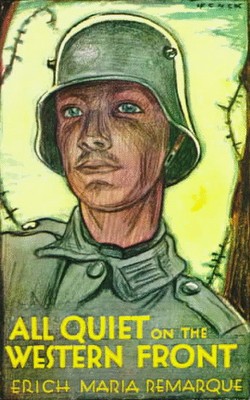 Image: The cover of the first English edition of All Quiet on the Western Front
Image: The cover of the first English edition of All Quiet on the Western Front
All Quiet on the Western Front is one of the all-time classic Great War books.
It tells the story of Paul Bäumer, a German soldier fighting on the Western Front, following his journey from raw recruit to hard-bitten combat veteran experienced in trench warfare.
Author Erich Maria Remarque had served with the Imperial German Army during World War One. He drew on his experiences in the trenches to bring the reality of the war to vivid life.
The book does not focus on heroics, but rather on the conditions in which a generation of young men found themselves when caught up in this horrendous conflict.
In the foreword, Remarque writes: “This book is to be neither an accusation nor a confession, and least of all an adventure, for death is not an adventure to those who stand face to face with it. It will try simply to tell of a generation of men who, even though they may have escaped (its) shells, were destroyed by the war."
All Quiet on the Western Front has been adapted for the screen three times. The 1930s version won the Academy Award for Best Picture, but the 2022 Netflix production is the only one to be shot in German.
Regeneration, Pat Barker
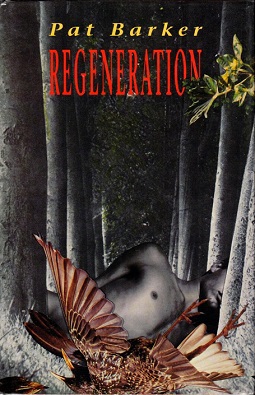 Image: Regeneration's first edition cover
Image: Regeneration's first edition cover
Pat Barker’s Regeneration often ranks highly on lists of the greatest historical fiction novels. It is so well researched and sticks as close as possible to the war’s history, that some critics think it blurs the line between non-fiction and fiction.
It follows many famous real-life characters, including war poets Siegfried Sassoon, Wilfred Owen, and Robert Graves, exploring the Great War’s emotional impact on those who fought it.
One of Regeneration’s principal characters is pioneering psychiatrist Dr W.H.R Rivers. Rivers worked at Craiglockhart War Hospital and helped treat shell-shocked patients like Sassoon overcome their psychological trauma.
Daniel Mason in the Guardian described Regeneration as “the most subtle depiction of trauma of the war I have ever read.”
Pat Barker immersed herself in many World War One books and novels, as well as researching the real-life experiences of her relatives, to inform Regeneration. Her grandfather had suffered bayonet wounds while serving on the Western Front, something which greatly intrigued the author.
Two further novels complete the Regeneration Trilogy, which deals with the themes of psychological hurt, masculinity, and the effects of conflict: The Eye in the Door and The Ghost Road.
A Farewell to Arms, Ernest Hemingway
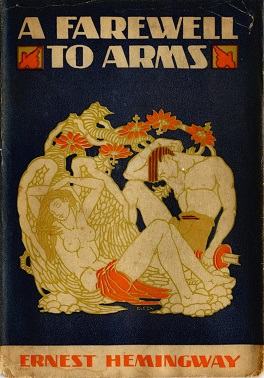 Image: The cover of the first edition of Hemmingway's A Farewell to Arms
Image: The cover of the first edition of Hemmingway's A Farewell to Arms
The 18-year-old Ernest Hemingway served as a Red Cross ambulance driver on the Italian Front during World War One. While there, he saw hundreds of wounded men and women and was seriously hurt himself in a burst of mortar fire.
While in Italy, Hemingway met and fell for nurse Agnes von Kurowsky. He was hopeful that Agnes would join him in the United States when he returned home to the United States in January 1919. However, he received a letter in March announcing Agnes had become engaged to a young Italian officer. Hemmingway was heartbroken.
Hemingway later channelled these negative, and what he’d seen in Italy, into his World War One book A Farewell to Arms.
The novel deals with American doctor Lieutenant Frederic Henry and his relationship with English nurse Catherine Barkley during in Italy during the Great War. Catherine mourns the death of her fiancé, who was killed in the war’s early stages but still encourages Henry’s romantic advances.
A Farewell to Arms deals with several contradictory themes, such as warfare and love, masculinity and femininity, and fear and courage.
Although he did not fight in the battles covered in A Farewell to Arms, Hemingway’s depictions of the Italian campaign are still packed with evocative imagery.
His description of the Italian retreat from Caporetto was so accurate that A Farewell to Arms was banned in Fascist Italy shortly after publication in 1929.
For more novels and fiction works covering the Great War, you might want to read:
- Birdsong – Sebastian Faulks
- Parade’s End – Ford Madox Ford
- A Long Long Way – Sebastian Barry
- Journey to the End of the Night – Louis-Ferdinand Céline
- The Return of the Soldier – Rebecca West
Best WW1 books non-fiction
Go to any bookshop in the UK and in the history section you’ll find the shelves bulging with the best WW1 non-fiction books.
Great War non-fiction is a huge genre. It takes in volumes dealing with military history and the development of modern warfare, through to memoirs, biographies of those involved in the fighting, and everything in between.
Best history books on WW1
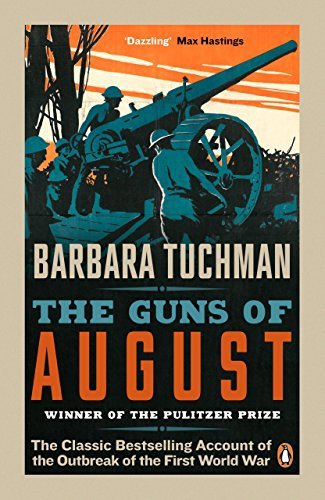 Image: Barbara Tuchman's The Guns of August is regarded as one of the best books on World War One
Image: Barbara Tuchman's The Guns of August is regarded as one of the best books on World War One
You could spend a lifetime searching for the perfect history books on World War One. There is so much to choose from for military history fans, as well as those that like to explore the political and sociological aspects of the war.
For beginners, Sir Michael Howard’s aptly titled The First World War: A Very Short Introduction might be the ideal entry point. Historian and Author John Boff describes Howard’s work as “the best, single, short introduction to the whole First World War.
“It’s a remarkable piece of concision, where Sir Michael has apparently absorbed all the research about the First World War and then boiled it down to 150 pages, which is remarkable.”
John Keegan’s The First World War is a more detailed account of the conflict. He looks at the causes of the war, the personal stories of those involved, and its major battles.
Keegan covers campaigns like the Battle of the Marne in the war’s opening stages to its final moments in November 1918. He goes into more detail than Sir Michael Howard, making it an essential single-volume read.
Pulitzer Prize-winning The Guns of August by Barbara W. Tuchman is widely considered one of the best books on WW1.
It was first published in 1962 and its reputation has increased since then. Tuchman threw herself into research, covering the events leading up to the war and its first month, weaving a compelling narrative on how the war began. It’s an essential read for all Great War and military history enthusiasts.
Best books on the causes of WW1
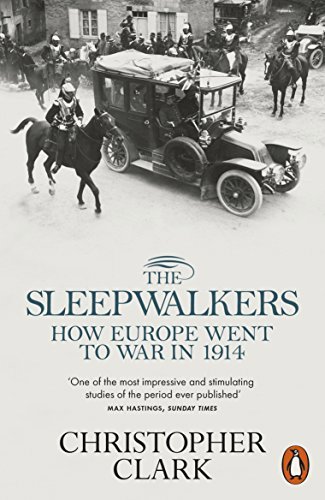 Image: Christopher Clark's Sleepwalkers is a masterpiece regarding the causes of World War One
Image: Christopher Clark's Sleepwalkers is a masterpiece regarding the causes of World War One
The causes of World War One are myriad and highly complex.
The political scene in Europe and the wider world was volatile in the 1900s and early 1910s. Ramifications from the 19th century’s conflicts were still reverberating around Europe, creating a tense atmosphere.
Navigating this web of political alliances, military endeavours, and build-up can be aided with a good book!
As well as Barbara Tuchman’s Guns of August, several significant works on the causes of World War One have been published over the years.
One of the most respected non-fiction works on this subject of recent years is Christopher Clark’s Sleepwalkers: How Europe Went to War in 1914.
Sleepwalkers is an exhaustively researched book. It goes into deep detail about the political machinations of the war’s major players (Russia, Germany, Great Britain, France, and Austro-Hungary), and provides compelling insights into Serbian affairs. It’s a great read for those seeking to understand how Europe and the world could be plunged into such a deadly conflict.
Another book covering this subject is Sir Hew Strachan’s 1,200-page epic The First World War Volume One: To Arms. It deals almost exclusively with 1914, taking in the political and military situation of the Entente and Central Powers prior to conflict breaking out, as well as the war’s opening battles.
To Arms also reiterates the need to take a global view of the Great War – it is called World War One after all! – and helps us move beyond a purely British-centric view of the war.
Books written during WW1
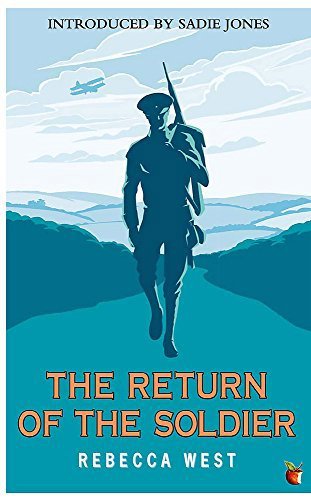 Image: Rebecca Smart's The Return of the Soldier was published in 1918 while the war was still raging
Image: Rebecca Smart's The Return of the Soldier was published in 1918 while the war was still raging
Trench warfare may not seem like a great environment for literary exploration, but it provided the catalyst for some of the 20th century’s most important literature.
The poets of the Great War drew heavily on their surroundings, creating chapter and verse to help them understand and explain the sights and sensations of World War One battlefields.
Others produced memoirs or fictional autobiographies to help get their thoughts and feelings down on paper and share what they’d endured while at war.
One book written from a civilian perspective is Rebecca West’s The Return of the Soldier.
Published in 1918, the final year of the Great War, the book deals with Captain Chris Baldry’s reintegration into society following being shellshocked in the trenches.
Told from the perspective of Captain Baldry’s cousin Jenny, The Return of the Soldier explores how relationships were frayed by the huge emotional wounds rent by conflict. It remains one of the best WW1 books.
WW1 books written by soldiers
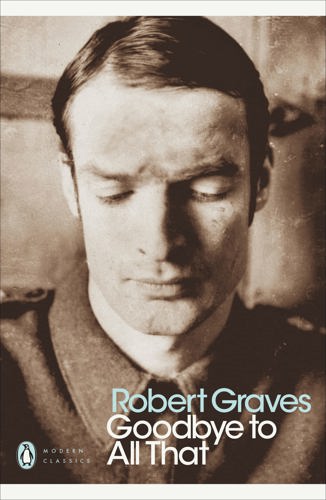 Image: Robert Graves' Good-bye to All That is a seminal autobiographical work detailing the author's frontline experiences.
Image: Robert Graves' Good-bye to All That is a seminal autobiographical work detailing the author's frontline experiences.
Some of the most famous and intriguing books written during World War One come from former soldiers.
Author Robert Graves, possibly most famous for his Imperial Rome-set novel I, Claudius, was one such soldier.
Graves’s Good-bye to All That is a frankly honest, at times blackly humorous, memoir of his time serving as a lieutenant, then captain, with the Royal Welsh Fusiliers on the Western Front.
The book provides an eyewitness account of trench warfare, including a detailed depiction of the Battle of Loos. Graves also describes the effects of gas attacks as well as the nightmarish fighting on the Somme in 1916.
Parts of Good-bye to All That were questioned and challenged by Graves’s contemporaries, including Siegfried Sassoon. Graves and Sassoon were good friends, and both had suffered psychological and physical trauma from their time in the trenches.
Sassoon’s own semi-autobiographical novel Memoirs of an Infantry Officer brings to life the writer’s journey from soldier to anti-war pioneer.
A review by the Daily Telegraph said of Memoirs “Those who in future really want to understand the atmosphere of the years 1916 and 1917, and the conditions of life, will turn back to this book”.
WW1 biography books
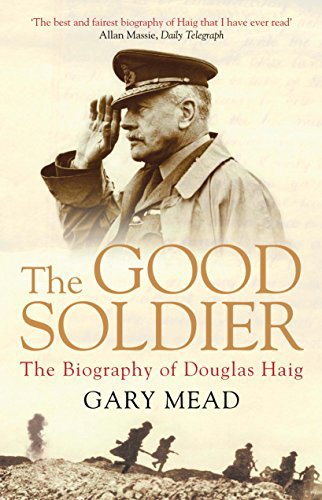 Image: Gary Mead sought to reassess Field Marshal Sir Douglas Haig's reputation with his biography The Good Soldier
Image: Gary Mead sought to reassess Field Marshal Sir Douglas Haig's reputation with his biography The Good Soldier
A good biography can really help you understand the personalities involved in prosecuting the Great War. As such, some of the best books on WW1 are biographies of its main actors.
For instance, The Good Soldier: The Biography of Douglas Haig by Gary Mead has sought to re-evaluate the Field Marshal. Haig’s post-war reputation has inspired debate for decades. Mead seeks to separate myth from reality regarding Haig in his well-reviewed book.
Sleepwalkers author Christopher Clark is a renowned researcher of German history. His biography of Kaiser Wilhelm II, Kaiser Wilhelm II: A Life in Power, helps us understand and explore the motivations of one of the Great War’s most controversial figures.
But biographies do not have to cover such important figures as emperors and field marshals. For instance, Edith Cavell: Nurse, Martyr, Hero by Diana Souhami tells the remarkable story of Edith Cavell.
Cavell, a devout Christian, was working as a matron in a Belgian hospital when German forces occupied the country in 1914. She helped servicemen escape the war by giving them jobs in her hospital or helping them cross the border to the Netherlands. When her work was discovered, German authorities ordered her death by firing squad.
Souahmi’s biography of this remarkable woman proves that the best World War One books do not need to cover the war’s epic battles to be compelling, inspirational, and interesting.
World War One children's books
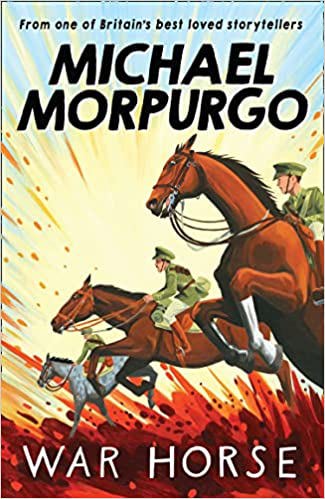 Image: War Horse is one of the most famous World War One books written for younger readers
Image: War Horse is one of the most famous World War One books written for younger readers
Perhaps the most famous works focussed on World War One for children were penned by renowned author Michael Morpurgo.
His War Horse and Private Peaceful are considered some of the best WW1 children’s books.
Private Peaceful is more geared towards older children. It tells Thomas "Tommo" Peaceful’s story as he looks back on his life while serving in the trenches as he waits for his brother Charlie's execution by firing squad.
War Horse has been adapted for stage and screen but tells children how humans weren’t the only victims of war. Millions of horses were killed during the conflict. The novel follows the journey of war horse Joey across the Western Front and his owner’s quest to be reunited with his four-legged friend.
Many WW1 children’s books revolve around children’s perspectives or animals’ role in the war.
A Soldier’s Friend from Megan Rix shares the fictional story of the cat Mouser and her doggy friend Sammy and how cats and dogs were used for tasks like sharing messengers or hunting rats to aid their human companions.
Archie’s War by Marcia Williams tells the story of ten-year-old Londoner Archie whose father and uncle are off fighting in France. In scrapbook form, the book gathers Archie’s self-drawn comics, letters from his father, and newspaper clippings to understand how the war affected children.
WW1 books for KS2
Boiling down such a bloody and complex conflict as the Great War for Key Stage 2 children can be tricky. Luckily, several authors have risen to the task.
One such author is Richard Brassey.
Brassey’s The Story of World War One is packed with interesting stories and impactful illustrations to help break down the story for younger readers.
It’s full of interesting facts too. Did you know that zeppelins were made from the same material as sausage skins, so sausages were banned in Germany for the duration of the war?
World War 1 picture books
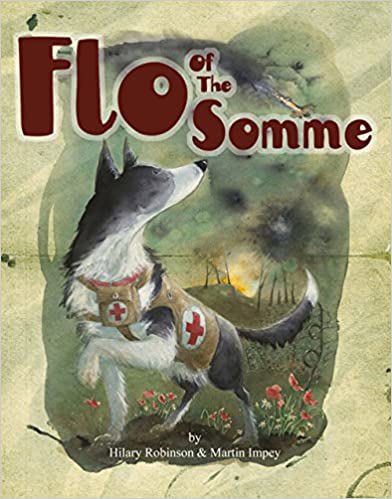 Image: Flo of the Somme examines the impact animals made on the war with beautiful illustrations.
Image: Flo of the Somme examines the impact animals made on the war with beautiful illustrations.
Younger readers often respond well to imagery to help guide them on their literary path. World War One picture books are a great way to engage with children to teach them about the conflict.
See Inside the First World War was written by Rob Lloyd Jones and illustrated by Maria Cristine Prite. It’s a fully illustrated flap book, with beautifully drawn scenes of the war from its 1914 beginnings through to its 1918 conclusion. It’s a great World War One picture book for young book lovers.
Flo of the Somme by Hilary Robinson with illustration by Martin Impey shows how animals were integral to the war effort. As well as the eponymous doggy hero of the book, Flo also looks at the impact of cats, canaries, bears, goats, rabbits, and even glow-worms, in a youngster-friendly format with captivating illustrations.
World War 1 audiobooks
Not a big fan of reading? Not to worry.
Many of the best WW1 books are available as audiobooks. These are great at helping you dive into trench warfare, military history, and more of the war’s ins and outs on the go, in your car, or relaxing at home.
The New York Times recommends the following World War One audiobooks:
- Catastrophe 1914: Europe Goes to War - Max Hastings, read by Simon Vance
- The Guns of August – Barbara W. Tuchman, read by Nadia May
- The War that Ended Peace: The Road to 1914 - Margaret MacMillan, read by Richard Burnip
- The Pity of War: Explaining World War One – Niall Ferguson, read by Graeme Malcolm
- July 1914: Countdown to War – Sean McMeekin, read by Steve Coulter
- The Face of Battle – John Keegan, read by Graeme McDonald
- World War One: A Short History – Norman Stone, read by Simon Prebble
What is the best book to read on World War 1?
We hope this article has proven that the best book to read on World War 1 really depends on what you’re looking for. There is no right or wrong answer!
The war continues to provide inspiration for writers from all literary spheres. From expressive imaginative poetry to in-depth biographies to children’s novels, new works appear every year.
There will probably never be a singular best book to read covering the Great War. It’s simply too big a subject but it remains an interesting, beguiling, and enthralling topic for readers and writers alike.
What is the best way to learn about WW1?
Again, there is no best way to learn about World War One, but we do have some ideas!
First off, get stuck into a good book! Any of the works mentioned in this blog will serve as the ideal starting point to learn more about the trials and tribulations of the Great War.
You can also head over to our blog to read more fascinating stories from the World Wars.
A trip to a Commonwealth War Graves Commission cemetery or memorial can prove illuminating too.
We also offer tours of our sites driven by volunteers or our amazing Public Engagement Coordinators.
You can also visit us in Ieper at our Information Centre or at the Commonwealth War Graves Visitor Centre in France to learn more about World War history.

